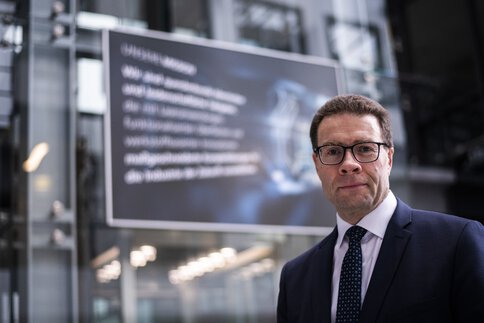„The move to Industry 4.0 is in full swing“
Prof. Christoph Leyens, director of the Fraunhofer Institute for Material and Beam Technology IWS Dresden and General Chair of the Lasers in Manufacturing (LiM) 2023 Conference addresses the trend towards networked, and ever more precisely controllable processes in laser material processing, potentials of beam shaping "on the fly" and the highlights of LiM 2023.
What are the focuses of LiM 2023?
The lecture program basically covers three topics: laser material processing at a micro and macro level and additive manufacturing. Material processing includes joining, cutting, and drilling as well as laser processes for surface treatment such as coating and structuring. It is very interesting how many presentations there are this time on the subject of process control. By this, I mean robust, easily controllable digitally networked processes and process chains. The range of materials is also larger. We were pleasantly surprised by the number of papers submitted on laser processing of transparent materials, semiconductors, and ceramic materials. There are three presentation sessions for this field alone. And last, but not least, we have laser-supported additive manufacturing with powder bed and laser cladding methods. Here, too, the presentations focus on digitalization. The lectures deal with optimized process control, the use of modeling and simulation and intelligent linking of the laser processes with the upstream and downstream processing steps. The move to Industry 4.0 is in full swing.
Are there currently any fascinating technology trends in your segment of photonics?
I can immediately think of high-performance lasers at power levels well above ten kilowatts. In material processing, they enable high process speeds. Due to technological advances and increasing international competition, laser power is becoming less expensive – I’m talking about several thousand rather than ten thousand euros per kilowatt. Another major trend, driven mainly by electric mobility, is the use of green and blue lasers. Their wavelengths are especially suitable for processing copper, which, in the course of electrification, is important for an increasing number of industries. With the right laser beam source, complex copper components can also be produced using additive manufacturing methods. A third trend is the increasingly precise control of energy input in laser material processing based on intelligent beam shaping strategies. If beam shaping can be adapted to the current process on the fly, the thermal load at the laser’s point of impact decreases and the processing quality increases. This dynamic beam shaping is, for example, practical when straight cuts and tight curves alternate in contour cuts. Dynamic beam shaping strategies are also in demand for varying materials and material thicknesses and for laser hardening of complex components. These strategies allow process speeds to be exploited to the full without compromising on quality. Consequently, laser processing is more precise and productive.
At your conference will there be highlights that you wish to draw the LASER community’s attention to?
Personally, I am very much looking forward to the presentations on laser processing of semiconductors and transparent materials. And, of course, we are looking forward to our two keynotes, this time by two proven experts from industry and industry-related research. Dr. Maria Farsari, Research Director at the Institute of the Electronic Structure and Laser, IESL-FORTH, in Greece, will be talking about research in her group, which specializes in nonlinear lithography, and the possibilities of 3D micro- and nanoprinting. Valeria Tirelli will be discussing the potentials of additive processes for manufacturing highly complex hydraulic components. She is CEO of Italian-based Aidro Hydraulics & 3D Printing, which has an outstanding reputation in this field. We are pleased to report that, on the whole, LiM 2023 will be a very international conference with presentations from the U.S.A., Japan and all over Europe. And it's not only international, but also interdisciplinary. This is especially true for our joint session with CLEO on light-matter interaction: just as light meets matter, in this session basic research meets application. I am very much looking forward to this.
For all other details about LiM 2023, visit wlt.de/lim-conference.

